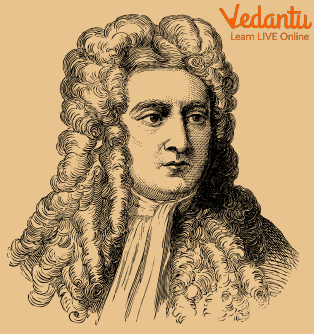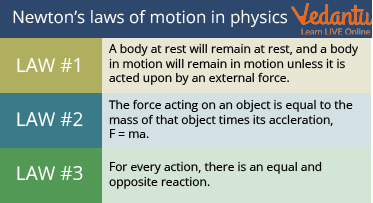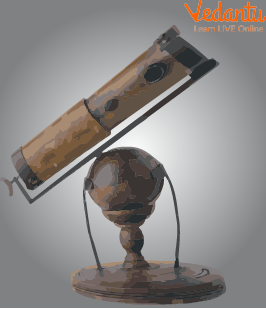




Who is Isaac Newton? Why are His Contributions Important?
Why are the objects around held down to the ground and not floating around the universe? Why do earth and other planets have a specified path they follow and don’t go about any random path? Probably there is a strong force holding us down to the ground. Maybe another strong force dictating the paths of another planet. Perhaps a similar force keeping the Moon in its orbit.
What if I tell you the ‘strong force’ mentioned in all the above cases is the same kind of force? Well, it’s easier for us to state so given the scientific and technological advancements, this man thought about it back in the 1600s with just an apple! We’re talking about Sir Isaac Newton. This article is all about looking back into his contributions across various subjects.

Sir Isaac Newton
Early Life
Isaac Newton was born on 4th January 1643 in England. His father passed away 3 months before he was born. His mother thought he could barely survive as he was a premature baby and was super weak.
When Newton was 3 years old, his mother fell in love again and got married to a minister. Newton and his step-father had a strained relationship due to which he was sent back to his maternal grandmother to be taken care of.
He pursued schooling in The King’s School, Grantham where he learned ancient Greek, Latin, and Mathematics.
Following his high grades in school, he went on to Trinity College, Cambridge, to pursue graduation.
In 1665, his university closed as a precautionary measure for the Great Plague due to which he was sent home.
His private study during the following years gave birth to his inventions on gravitation, calculus, laws of motion, optics, etc.,

Isaac Newton's Early Life
Contributions to Science and Mathematics
Isaac Newton is one of the greatest scientists of all time. His contributions to Physics and Mathematics in particular have re-written the fate of these subjects for the centuries to come. Some of his important contributions and discoveries are discussed below.
Gravity
The force that keeps us bound to the ground, the force that is responsible for the rotation and revolution of planets in an orbit, and the force that keeps the Moon in its orbit are all the same force, the gravitational force.
The phenomenon of gravity was first thought about by Newton. The famous ‘apple fell on Newton’s head’ story is often associated with the discovery of gravity and gave the law “Universal Law of Gravitation”

Isaac Newton’s Contribution to Discovering Gravity
Optics
White light can be split into the colours of the rainbow! You’ll learn about this property in higher classes, known as the ‘splitting of white light’. Putting this into easier understanding, when white light passes through a glass prism, the prism refracts (bends) the rays of light at various angles producing the colours of the rainbow. Though the result of this experiment would have been fascinating, it came as a surprise that white light was made up of several colours. This observation and inference were first given by Newton. It was a breakthrough in the field of optics.

Splitting of White Light Performed by Newton
Laws of Motion
Isaac Newton proposed the three laws of motion, famously known as Newton’s Law of Motion. These laws revolutionised the motion of objects. Though these are considered simple observations in the present day, these were complex ideas to be put in the form of laws back in the days. These laws help us understand the motion of big objects in a bigger picture..

Laws of Motion
Reflective Telescope
From his earlier understanding of refraction (bending) of light and splitting of white light, Newton understood that the refractive telescope found by Galileo (another famous scientist around that time) had a few limitations. He applied his knowledge of optics to invent the reflective telescope which had better scope than its earlier counterpart. It is now famously known as the Newtonian telescope.

First Reflective Telescope was Invented by Newton
Calculus
The concept of calculus is pretty complex to understand. In simple words, calculus is a branch of Mathematics that deals with dynamic quantities. In other words, any fast-changing quantity can be determined using calculus. Calculus has important applications in Physics, Chemistry, astronomy, etc. The basics of calculus were brought together by Isaac Newton in the late 1600s
Summary
Let’s summarise what we’ve learned up until now.
Sir Isaac Newton is the greatest Scientist of all time from England. He did his schooling in the King’s School, Grantham, and graduated from Trinity College, Cambridge. During the Great Plague of the 1600s, he was doing a lot of self-study due to which he invented gravity, laws of motion, splitting phenomenon of white light, reflective telescope, and calculus. His contributions to science and Mathematics are enormous and have revolutionised these subjects for the better ever since.
FAQs on Isaac Newton Contribution
1. What were the recognitions Sir Isaac Newton got for his contributions to Science and Physics?
As a tribute to his innumerable contributions in the field of science and Mathematics like calculus, gravitation, optics like the splitting of white light, and reflective telescopes, Newton was made the President of the Royal Society in the year 1703. He was also made a Knight by Queen Anne in the year 1705 during his visit to Trinity College. His mortal remains were laid in the Westminster Abbey along with those of royal kings and queens who died earlier.
2. Why did Newton invent the reflective telescope and on what basis did he do so?
Newton viewed the refractive telescope invented by Galileo Galilei and realised that it had certain limitations for usage as the bending ability of light caused some errors in the image produced by it after observing the microscopic body. To correct these errors caused by the bending of light due to the lenses placed, he used mirrors in place of lenses so that the light reflects (bounces back) instead of refracting (bending) creating a much clearer image. He applied these principles to invent the reflective telescope.









